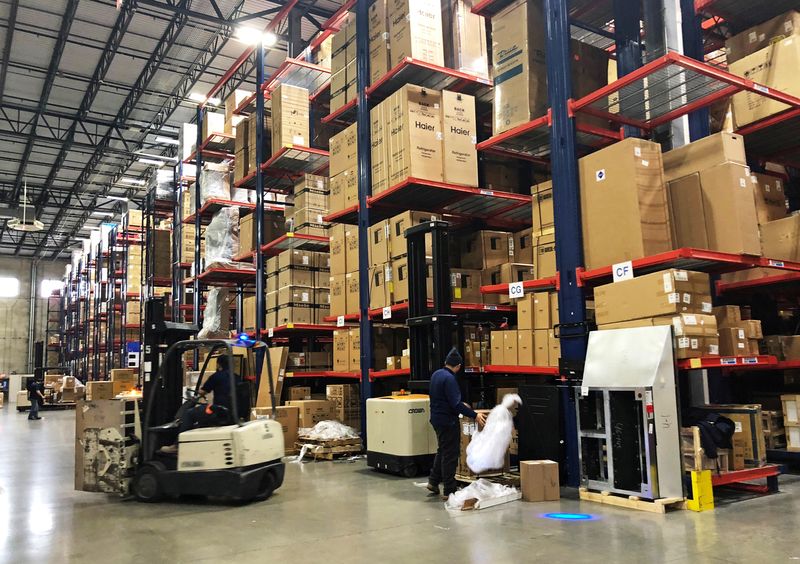WASHINGTON (Reuters) - U.S. business inventories increased strongly in December, with motor vehicle stocks accelerating, a sign that the worst of the global semiconductor shortage was probably behind.
Business inventories increased 2.1% after rising 1.5% in November, the Commerce Department said on Wednesday. Inventories are a key component of gross domestic product. December's increase was in line with economists' expectations. Inventories shot up 10.5% on a year-on-year basis in December.
Retail inventories surged 4.2% in December, instead of 4.4% as estimated in an advance report published last month. That followed a 2.0% increase in November.
Motor vehicle inventories accelerated 6.8% as estimated last month. They increased 4.2% in November.
That would suggest the global shortage of semiconductors, which has constrained motor vehicle production, was easing. But that improvement in supply has not been evident in producer inflation data, which showed wholesale motor vehicle and
equipment prices increasing a solid 0.7% in January.
Retail inventories excluding autos, which go into the calculation of GDP, jumped 3.3%, rather than 3.6% as estimated last month.
Inventory investment increased at a seasonally adjusted annualized rate of $173.5 billion in the fourth quarter, the second-largest quarterly increase on record.
Most economists see further scope for inventories to rise, noting that inflation-adjusted inventories remain below their pre-pandemic level. Sales-to-inventory ratios are also low.
Inventories contributed 4.90 percentage points to the fourth quarter's 6.9% annualized growth pace. Restocking, after three straight quarters during which inventories were drawn down, is supporting manufacturing.

Wholesale inventories increased 2.2% in December. Stocks at manufacturers rose 0.3%.
Business sales fell 0.7% in December after increasing 1.1% in November. At December's sales pace, it would take 1.29 months for businesses to clear shelves, up from 1.25 months in November.